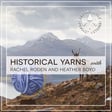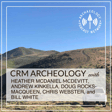
The History of Shetland Lace, Part 1 - S1Ep1
Welcome to the first episode of this new podcast from the Archaeology Podcast Network! This is the first of six episodes in the first season. Today, Rachel and Heather talk about the history of Shetland Lace. In the second half they talk about starting the shawl pattern that's the focus of this season. What kind of yarn should you use? What about needles? You'll find out everything you need to know to start this project.
LinksTo get your copy of the pattern, and knit-a-long head over to Rachel’s pattern store on Ravelry (https://www.ravelry.com/designers/rachel-roden)To get the yarn Rachel recommends, head over to Jimmy Beans Wool (https://www.jimmybeanswool.com/knitting/yarn/BichesetBuches/LePetitLambswool.asp?showLarge=true&specPCVID=91487)ContactRachelRavelryInstagramTwitterFacebookWebsiteHeatherInstagramRavelry






